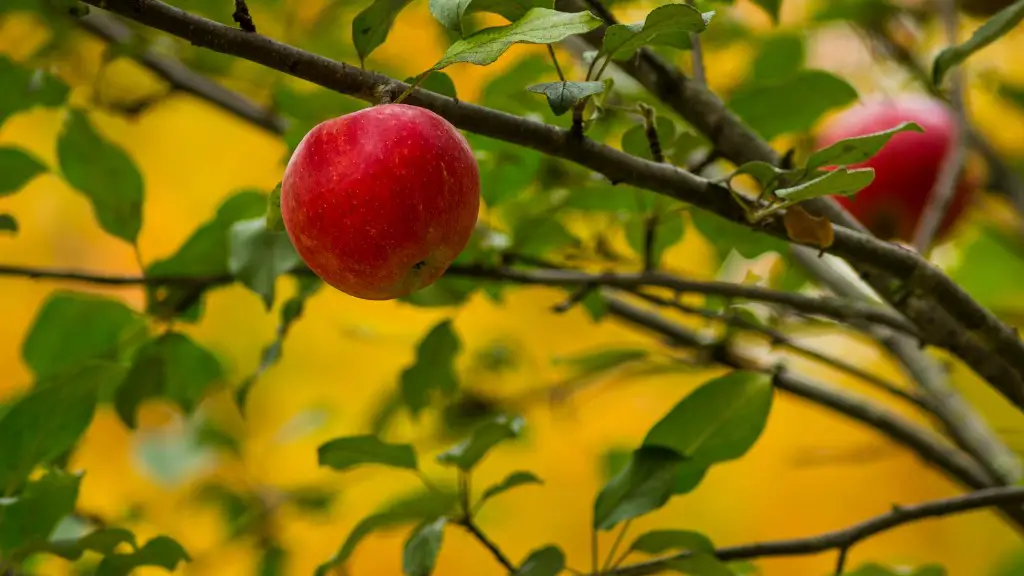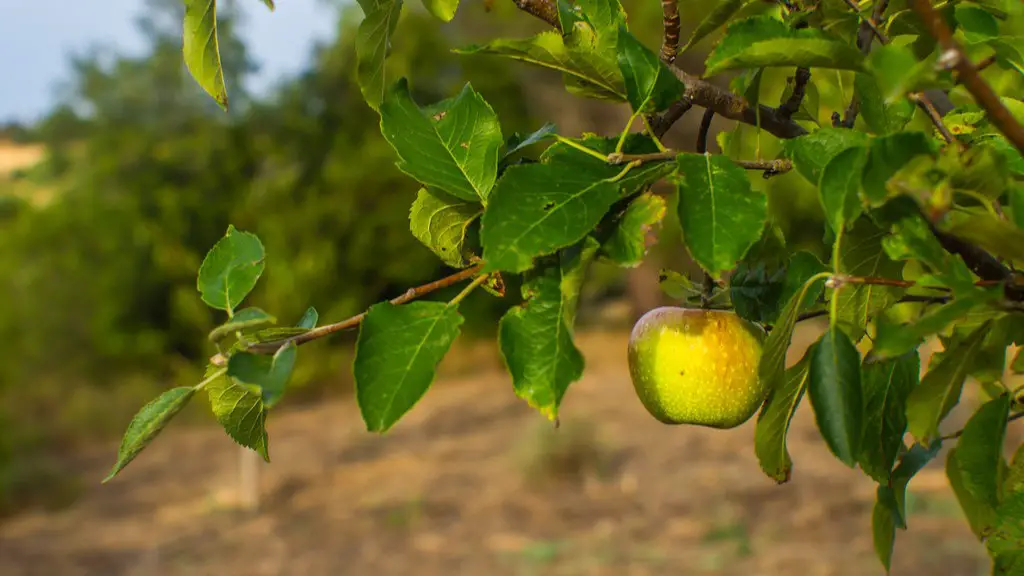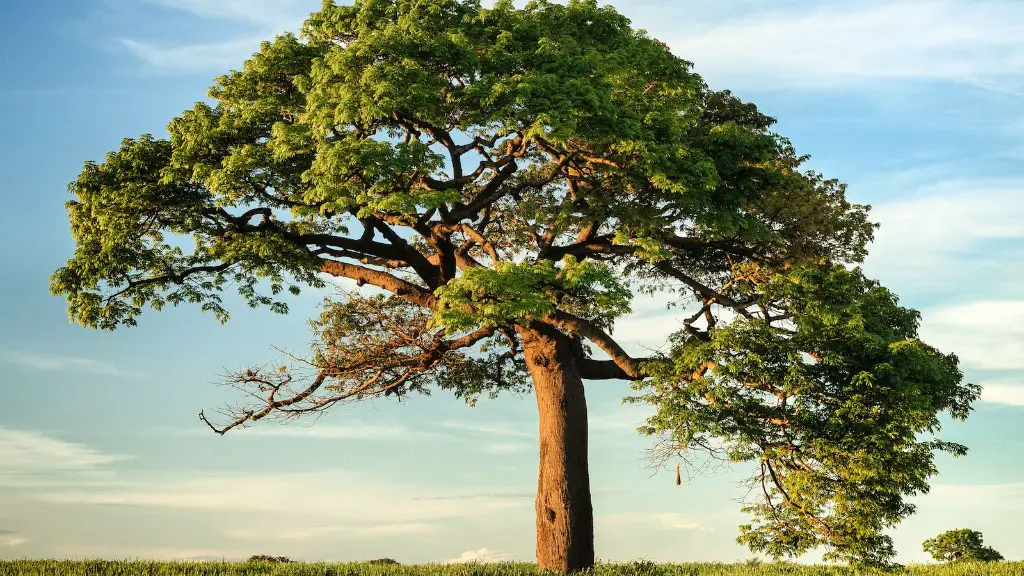Apple trees are a beautiful and popular addition to many yards. Though they are relatively easy to care for, there are a few key things you should keep in mind to ensure your tree is healthy and fruitful. Here are some tips on how to care for your apple tree.
When you first plant your tree, water it deeply and regularly for the first few weeks. After that, water it every week or so, depending on the weather. In the spring and summer, you’ll also need to fertilize your tree.
How can I make my apple tree grow better?
Growing apple trees can be a rewarding experience, and following a few simple tips can help ensure success. Water regularly, but be careful not to overwater as this can lead to problems with the roots. Provide support for young trees, as they will need it to produce heavier fruit production later on. Mulching and pruning are also important, and controlling pests is essential to keeping your apple trees healthy.
There are a few different ways to control pests and diseases on fruit trees. One method is to use a spray oil, which can help to control aphids, mites, scales, and pear psyllas. Another option is to use a copper soap, which is effective for cedar apple rust, fire blight, and peach leaf curl. Myclobutanil is also effective against brown rot and cedar apple rust.
How do you take care of an apple tree in the fall
Fall is a critical time for fruit trees. Make sure that your tree is watered well into mid-October. Rake fallen leaves from under fruit trees. Don’t fertilize your trees. Pick fruit carefully. Separate flawed fruit from perfect fruit when storing. Wait until early spring for all major pruning. Control Insects.
As the weather begins to cool down and the leaves start to change color, it’s important to take some time to prepare your apple trees for winter. Here are a few tips:
-Clean up around the trees, removing all fallen fruit and dead leaves.
-Refrain from fertilizing in the fall.
-Do not over prune.
-Apply a pest barrier.
-Mulch around the trees.
-Paint the trunks white and create tree guards.
-Keep the trees well-watered.
-Harvest any lingering fruits.
By taking these simple steps, you can help your apple trees survive the winter and produce a bountiful crop come spring.
How do I encourage my apple tree to produce fruit?
If you want to produce fruit from apples and pears, you must cross pollinate them. This means that you must plant two different varieties of each in order to get a good yield. There are also varieties of each fruit that produce sterile pollen. These varieties need to be planted with at least two other varieties in order to pollinate properly.
Thank you for your question. Miracle-Gro Water Soluble All Purpose Plant Food is not labeled for fruit trees. We would recommend using a fertilizer that is intended for fruit trees such as Ferti-Lome Fruit, Citrus and Pecan Tree Food 19-10-5.
How do I keep bugs off my apple tree naturally?
It is important to keep the area around your apple tree clear of debris and trimmed so that the tree can grow correctly. You should remove any plastic or paper tree guards that might be harbouring adult moths or flies, and replace them with wire mesh guards. Every winter, before new growth begins, prune your apple tree to remove crossing branches, water spouts, and any other over-crowded areas.
The main objective in spraying apple trees is to prevent insect damage to the fruit. The most important period to spray apple trees is from petal drop until just prior to harvest.
When should you not spray apple trees
Fruit set is the start of the fruit ripening process. After fruit set, the fruit will continue to ripen and should be picked at regular intervals. spraying should be discontinued 4 weeks before harvest to allow the fruit to ripen properly.
Winterizing your fruit trees is a great way to protect them from the cold weather and ensure that they are healthy and productive come spring. Here are a few tips to help you get started:
1. Start by pruning your trees to remove any dead or damaged branches. This will help them to withstand the winter weather and promote new growth in the spring.
2. Apply a layer of mulch around the base of each tree to help insulate the roots and protect them from the cold.
3. If you live in an area where the winter weather is particularly harsh, you may want to consider wrapping your trees in burlap or covering them with a tarp to further protect them.
By taking these simple steps, you can help your fruit trees survive the winter and be ready to produce delicious fruit come springtime.
What time of year is best to prune apple trees?
It’s generally best to prune apple trees in late winter, just before spring. This is because the worst of the cold weather is past, so you won’t be subjecting the fresh cuts to severe icing. However, you can prune an apple tree any time of the year without hurting it.
Frost cracking can be a serious problem for fruit trees. The best way to protect against it is to wrap the tree trunk in tree wrap and remove the wrap in spring after the last frost. This will help to keep the bark moist and prevent the cracks from forming.
When should I feed my apple tree
Spring is the best time to fertilize fruit trees because they need plenty of energy to push out new leaves and nurture baby fruits.
There are two main methods of feeding apples and young pear trees – using a potassium-rich general fertilizer, or using Growmore fertilizer. Both methods will provide the trees with the nutrients they need to encourage healthy growth.
What should I put around my fruit trees?
Organic matter is a great mulching material because it decomposes and enriches the soil as it does so. Apply it to a depth of 2-6 inches and make sure to cover the ground around the plant out to the drip line. Black plastic is often used in vegetable production to warm the soil and suppress weeds.
Fruit trees need a lot of nitrogen to produce big, healthy fruit. The best way to provide them with nitrogen is to use an organic fertilizer that is high in nitrogen. Blood meal, soybean meal, composted chicken manure, cottonseed meal, and feather meal are all good, organic nitrogen sources.
Final Words
In order to keep your apple tree healthy and productive, you will need to provide regular care throughout the year. This includes tasks such as pruning, fertilizing, watering, and pest control. By following these simple tips, you can ensure that your apple tree will be a source of enjoyment for years to come.
By following the proper care techniques for your apple tree, you can ensure a bountiful harvest of crisp, juicy apples each year. Water your tree deeply and regularly, especially during dry periods. fertilize your tree yearly with a balanced fertilizer, and prune away any dead or diseased branches. With a little love and care, your apple tree will provide you with years of enjoyment.




